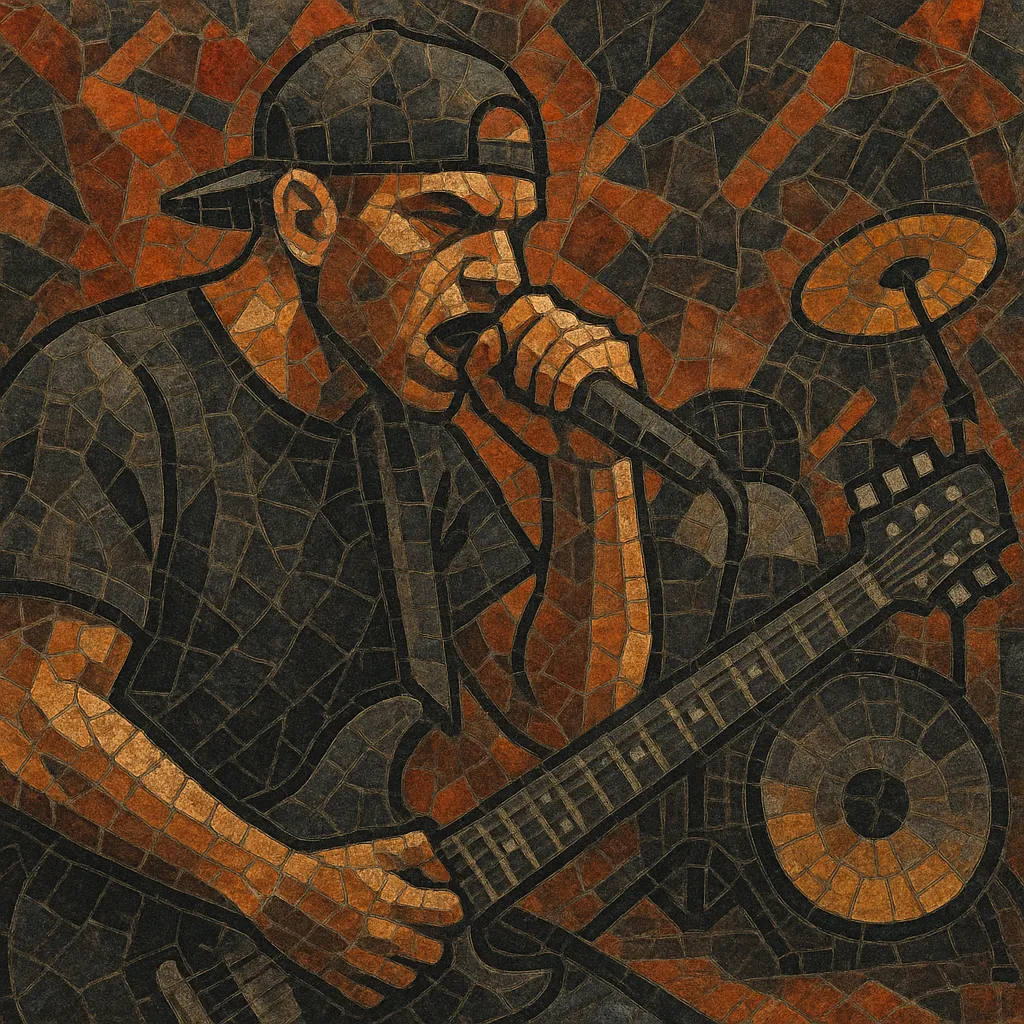Rap metal fuses the rhythmic vocal delivery and sampling culture of hip hop with the high-gain guitars, driving bass, and aggressive drums of metal.
Typical tracks feature rapped verses, shouted or sung hooks, syncopated, groove-heavy riffs, and punchy backbeats that prioritize head-nodding momentum as much as mosh-friendly impact. Down-tuned guitars, palm-muted chugs, and start–stop rhythms are common, often paired with DJ cuts, samples, or electronics. Lyrically, the style ranges from social and political commentary to braggadocio and cathartic personal themes.
The genre overlaps with rap rock and nu metal, but it leans more toward metal riffing and heaviness than rap rock, and centers rap as a primary vocal approach rather than a secondary color.
Hip hop–rock crossovers in the mid-to-late 1980s laid the groundwork for rap metal. Run-D.M.C. and Aerosmith’s 1986 remake of "Walk This Way" popularized rap-rock on mainstream radio, while collaborations like Anthrax and Public Enemy’s "Bring the Noise" showed how thrash intensity and rap could coexist. Faith No More also experimented with rap-inflected vocals over metal-funk hybrids, setting a template for heavier rap-forward bands to follow.
The genre cohered in the early 1990s with acts that centered rapped vocals over unmistakably metal frameworks. Ice‑T’s Body Count (debut 1992) and Rage Against the Machine (debut 1992) became touchstones: the former for bridging hip hop’s street reportage with hardcore riffing, the latter for politically charged, groove-driven, drop‑tuned riffs and turntable textures. European groups like Clawfinger (Sweden) and Stuck Mojo (US) further codified the sound’s international reach.
By the late 1990s, rap metal intersected with the rise of nu metal. Limp Bizkit, Linkin Park, Kid Rock, Papa Roach, and P.O.D. brought rapped verses, big choruses, and down‑tuned riffs to MTV, festivals, and global charts. While not every nu metal act used rapping, rap metal’s vocal approach and groove-centric riffing became a defining flavor of the era.
A commercial peak gave way to backlash as trends shifted. Some bands pivoted to more melodic alt‑metal or post‑hardcore styles, while others doubled down on heaviness. Nevertheless, rap metal’s DNA—syncopated riffing, hip hop cadences, and turntable/electronic ornamentation—remained present across alternative and mainstream metal.
A new wave fused rap metal with djent, metalcore, and trap production: acts like Hacktivist refreshed the formula with polymetric grooves, while the emergence of trap metal and "rage rap" absorbed nu metal/rap metal’s aggression into hip hop’s sonic palette. Legacy acts returned to acclaim (e.g., Body Count’s late‑career awards) and continued festival dominance kept the style culturally visible.


